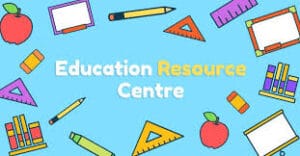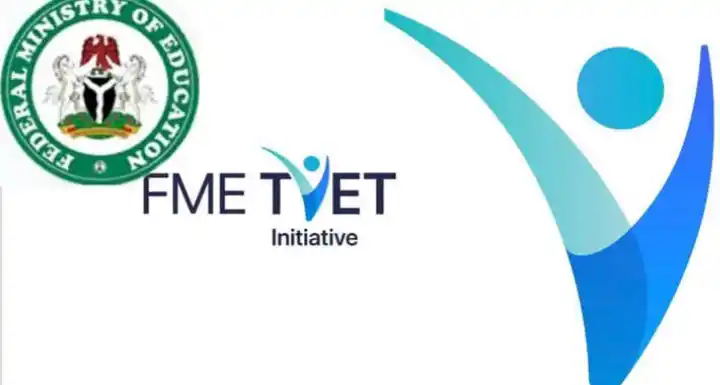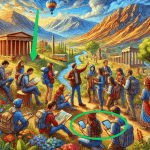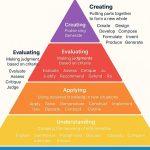
Educational Resource Centre: Functions, Importance
Educational Resource Centres (ERCs) are pivotal in enhancing the teaching-learning experience. They are known by various names such as Media Centres, Learning Centres, Audiovisual Aids Centres, and Information Centres. Despite the diversity in terminology, the core philosophy remains the same: to create an environment that fosters effective learning through the use of instructional materials.
What is an Educational Resource Centre?
An Educational Resource Centre, as defined by Heinich, Molanda, Russell, and Smaldino (2002), is a self-contained environment designed to promote individual or small group learning around a specific task. It is a structured environment that stores, organizes, and facilitates the use of instructional materials to enhance learning. According to Adeyar.ju (2003), the Learning Resource Centre is the laboratory of the educational technologist, a place where instructional materials are kept and maintained.
Importance of Educational Resource Centres
Salawu, Afolabi, and Taiwo (2001) emphasize the importance of ERCs, comparing them to laboratories in science education and language laboratories in language teaching. ERCs play a crucial role in improving access to information by collecting and organizing materials useful to specific groups, such as health workers. These materials can range from training manuals and reference books to videos and samples of equipment.
Functions of an Educational Resource Centre
1. Making Information Accessible
- Collect and organize materials: The primary function of an ERC is to gather a wide range of instructional materials and organize them in a manner that makes them easily accessible to users. This includes books, journals, multimedia resources, and other educational tools.
- Provide access to up-to-date and relevant materials: It is essential that the materials available in the ERC are current and relevant to the needs of the users. This ensures that learners have access to the most recent information and resources.
- Create a pleasant environment for learning and training: The physical environment of the ERC should be conducive to learning. This includes comfortable seating, adequate lighting, and a quiet atmosphere that encourages concentration and study.
2. Encouraging the Use of Information
- Assist users in finding relevant information: ERC staff should be trained to help users locate the materials they need. This may involve using catalogues, databases, or other information retrieval systems.
- Provide materials to support training and health promotion: ERCs often serve as a resource for training programs and health promotion activities. They provide materials that can be used in workshops, seminars, and other educational events.
- Organize workshops and produce information packs: ERCs can organize workshops that use materials as tools for problem-solving and learning. They can also produce information packs that summarize key information and distribute them to users.
3. Producing Materials
- Document experiences of health teams and community groups: ERCs can work with health teams and community groups to document their experiences and create case studies, reports, and other materials that can be used for learning and training.
- Adapt, translate, and produce health learning materials: ERCs can adapt existing materials to meet the needs of specific user groups. This may involve translating materials into different languages or creating new materials based on local needs and contexts.
4. Strengthening Links with Other Organizations
- List local, national, and international organizations: ERCs should maintain a directory of organizations that are relevant to their users. This can include government agencies, non-governmental organizations (NGOs), and international bodies.
- Develop contacts between organizations in similar fields: ERCs can facilitate networking and collaboration between organizations that work in similar fields. This can lead to the sharing of resources, expertise, and best practices.
Planning an Educational Resource Centre
Vision
- Define what you want the resource centre to achieve in five years: The vision statement should outline the long-term goals and aspirations of the ERC. It should provide a clear direction for the development and growth of the centre.
- Identify necessary human, equipment, and financial resources: The vision should be supported by a realistic assessment of the resources needed to achieve it. This includes staffing, equipment, and funding.
External Environment
- Consider trends in the health sector and related fields: The ERC should be aware of trends and developments in the sectors it serves. This can help to identify emerging needs and opportunities.
- Identify key information providers and potential links with other organizations: The ERC should establish relationships with key information providers, such as government agencies, NGOs, and academic institutions. This can help to ensure a steady flow of relevant materials and information.
Mission
- Define the resource centre’s values and target audience: The mission statement should articulate the core values of the ERC and identify the primary user groups it aims to serve.
- Determine how the centre will meet the needs of its users: The mission should outline the strategies and approaches that the ERC will use to meet the needs of its users. This may include providing access to materials, organizing workshops, and producing information packs.
Aim and Objectives
- Establish broad, long-term aims and specific, measurable objectives: The aims and objectives should be aligned with the vision and mission of the ERC. They should provide a clear framework for planning and decision-making.
- Develop an action plan with clear activities, responsibilities, and timelines: The action plan should outline the specific activities that will be undertaken to achieve the objectives. It should also identify who will be responsible for each activity and set deadlines for completion.
Communication
- Identify key audiences and messages: The ERC should identify the key audiences it needs to communicate with, such as users, staff, and stakeholders. It should also determine the key messages that need to be communicated to each audience.
- Integrate communication plans into the overall strategic plan: Communication should be an integral part of the strategic plan. This includes developing a communication strategy, identifying communication channels, and setting communication goals.
Contingencies
- Prepare for potential challenges and alternative plans: The ERC should anticipate potential challenges and develop contingency plans to address them. This may include identifying alternative sources of funding, developing backup systems for information storage, and planning for staff turnover.
Policies and Procedures
- Develop written operating policies: The ERC should have written policies and procedures that govern its operations. This includes policies on access to materials, use of equipment, and staff responsibilities.
- Ensure existing policies support the action plan: The existing policies should be reviewed to ensure they support the action plan and strategic objectives. Any necessary changes should be made to align the policies with the strategic plan.
Resources
- Assess available funds, equipment, and staff: The ERC should conduct a thorough assessment of its available resources, including funds, equipment, and staff. This will help to identify any gaps or shortages that need to be addressed.
- Develop budgets based on the action plan: The action plan should be used to develop detailed budgets for each activity. This will help to ensure that the necessary resources are available to achieve the objectives.
Monitoring and Evaluation
- Establish methods for monitoring and evaluating the strategic plan: The ERC should develop a monitoring and evaluation framework to track progress towards the objectives. This may include setting up a system for regular reporting, conducting surveys, and holding review meetings.
- Assign responsibility for these tasks: Specific individuals or teams should be assigned responsibility for monitoring and evaluation. This will help to ensure that the process is carried out effectively and that any issues are identified and addressed promptly.
Ideal Expectations of an Educational Resource Centre
An ideal ERC should include the following units:
Information Unit
- Satisfy all information needs of the environment: The information unit should be well-equipped and staffed to meet the information needs of the community it serves. This includes providing access to a wide range of resources and offering information services.
- Coordinate information between all units and external bodies: The information unit should act as a central hub for information sharing and coordination. It should ensure that all units within the ERC are informed and that there is effective communication with external organizations.
Reference Unit
- Preserve and provide details of resource materials’ locations: The reference unit should maintain a comprehensive catalogue of all materials available in the ERC. It should also provide information on the location of materials and assist users in finding what they need.
Curriculum Development Unit
- Work with the education ministry to monitor curricula: The curriculum development unit should collaborate with the education ministry to ensure that the curricula used in schools are relevant and effective. It should also monitor the implementation of curricula and provide feedback for improvement.
Production Unit
- Develop instructional materials based on research findings: The production unit should be responsible for creating new instructional materials based on research and user needs. This may involve designing prototypes, testing materials, and producing final versions for use in the ERC.
Education Research Unit
- Meet the educational needs of the community through research: The education research unit should conduct research to identify the educational needs of the community. It should also evaluate the effectiveness of existing materials and programs and make recommendations for improvement.
Science Development Unit
- Develop resource materials for science and technology: The science development unit should focus on creating materials that support the teaching and learning of science and technology. This may include developing experiments, creating models, and producing multimedia resources.
Language Development Unit
- Facilitate the learning and development of languages: The language development unit should provide resources and support for the learning of languages. This may include offering language courses, developing language learning materials, and organizing language events.
Guidance and Counseling Unit
- Assist students in choosing subjects and career paths: The guidance and counseling unit should provide support to students in making informed decisions about their education and career paths. This may include offering career counseling, organizing career fairs, and providing information on further education opportunities.
Audio-Visual Unit
- Provide access to audio, visual, and video materials: The audio-visual unit should offer a range of multimedia resources that support learning. This may include audio tapes, video tapes, film strips, and other visual materials.
Examination/Certification Unit
- Conduct state placement examinations: The examination/certification unit should be responsible for organizing and conducting examinations for students. This may include state placement examinations, certification exams, and other assessments.
Library Unit
- Provide print and non-print instructional materials: The library unit should offer a wide range of materials, including books, journals, and multimedia resources. It should also provide access to digital resources and online databases.
Circulation and External Services Unit
- Facilitate links between ERCs at different locations: The circulation and external services unit should ensure that there is effective communication and collaboration between ERCs. This may involve organizing exchange programs, sharing resources, and coordinating joint activities.
Storage Unit
- Maintain and store facilities and non-print materials: The storage unit should be responsible for the safe keeping of all materials and equipment in the ERC. It should ensure that materials are stored in appropriate conditions and are easily accessible when needed.
Computer Unit
- Provide internet services and access to digital resources: The computer unit should offer access to computers and the internet for users. It should also provide support for using digital resources and online learning platforms.
Criteria for Acquiring Instructional Resources
Content of Materials
- Ensure materials are relevant, up-to-date, and accurate: The content of the materials should be relevant to the needs of the users and reflect current knowledge and best practices. It should also be accurate and free from errors.
Purpose
- Align materials with the centre’s objectives: The materials should be aligned with the objectives of the ERC and support its mission and vision. They should be designed to meet the specific needs of the users.
Appropriateness
- Consider ease of use and relevance to client characteristics: The materials should be appropriate for the intended users. This includes considering their age, educational level, and cultural background. The materials should also be easy to use and understand.
Cost
- Evaluate the affordability and maintenance costs of materials: The cost of acquiring and maintaining materials should be considered. This includes the initial purchase price, as well as ongoing costs for maintenance, updates, and replacements.
Technical Quality
- Choose materials with high technical quality and ease of maintenance: The materials should be of high technical quality and should be easy to maintain. This includes considering the durability of materials and the availability of spare parts and technical support.
Models/Forms of Resource Centres
Classroom Learning Centres (CLC)
- Provide a rich display of instructional resources within classrooms: Classroom Learning Centres (CLCs) are designed to provide a rich learning environment within the classroom. They include a variety of instructional resources that are easily accessible to students and support independent learning.
Community Learning Resource Centres
- Serve the broader community with diverse learning materials: Community Learning Resource Centres (CLRCs) are designed to serve the broader community. They offer a wide range of learning materials and resources that are accessible to all members of the community.
Management and Maintenance of ERCs
- Plan the physical layout and adopt a clear administrative pattern: Effective management and maintenance of ERCs require careful planning of the physical layout and the adoption of a clear administrative pattern. This includes ensuring that the centre is well-organized and that there are clear procedures for managing resources and staff.
Physical Plant Requirement
- Ensure adequate space and comfort for staff and users: The physical plant of the ERC should be designed to provide adequate space and comfort for staff and users. This includes ensuring that there is enough space for work and study, as well as providing comfortable seating and adequate lighting.
Administrative Patterns
- Choose from complete decentralisation, centralisation of library material and services, centralisation of separate library and audiovisual services, or centralisation of media centre services: There are several administrative patterns that can be adopted for the management of ERCs. These include complete decentralisation, centralisation of library material and services, centralisation of separate library and audiovisual services, and centralisation of media centre services. Each pattern has its own advantages and disadvantages, and the choice will depend on the specific needs and circumstances of the ERC.
Conclusion
Educational Resource Centres are essential for promoting effective learning and access to information. By carefully planning and managing these centres, we can create environments that support the educational needs of diverse communities. Whether through the development of instructional materials, the organization of workshops, or the provision of access to digital resources, ERCs play a vital role in the educational landscape.
By understanding the functions, planning processes, and ideal expectations of ERCs, we can ensure these centres meet the needs of their users and contribute to the overall goal of enhancing education.








